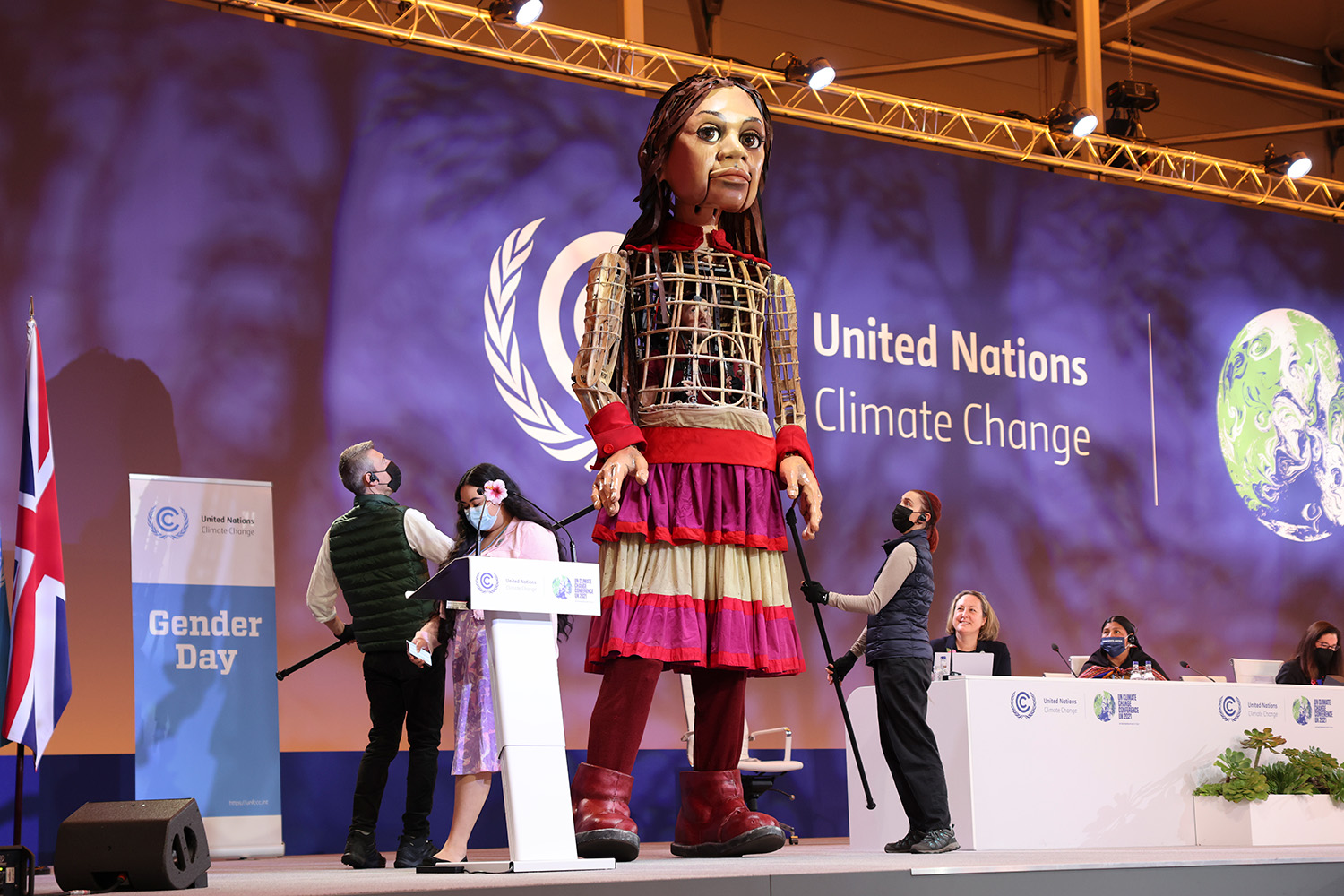Women’s leadership and gender-responsive financing for effective climate action

Photo: Gender Day (Picture by Tim Hammond / No 10 Downing Street for the UK Government)
Niyati Singaraju and Ranjitha Puskur
At the United Nations Climate Change Conference 2021 (commonly referred to as Conference of Parties – COP26) Glasgow, "Gender Day" was observed to recognize and celebrate equality and empowerment of women and girls in climate policy and action. Gender Day builds on the momentum created at COP25 to advance gender-responsive climate action. Its guiding principle was how climate action and justice are incomplete without considering gender equality and gender justice. The idea emanates from the fact that men and women are differentially impacted by the effects of climate change.
Even today, a large section of rural women in the Global South depends on agriculture for their livelihoods. The women are highly vulnerable to climate change impacts through their engagement. Temperature rise, frequent flooding, increased salinity, droughts affect agricultural production resulting in income losses for many smallholders across the Global South.
Evidence shows women are more affected than men by climate hazards because they lack access to and control over productive resources, information, finance, and opportunities. Restrictive social norms and practices further limit their ability to cope with climate change impacts. In several regions, as men migrate for non-farm work opportunities to contend with livelihood losses, women continue to depend on agriculture and are vulnerable to climate hazards.
The COP26 deliberated on the gender-differentiated impacts of climate change manifested in loss of livelihoods and displacement. The need for women’s leadership and voice in policy design and implementation came to the fore like never before. Another important focus that emerged was the critical need for reviewing and adjusting the flow of international climate finance to developing countries using a gender lens.
Women’s leadership in climate change related decision-making
The minimal representation of women from most vulnerable socio-economic groups in the leadership for the design of initiatives and policies to fight the consequences of climate change was conspicuous. Unless women are empowered to be equal participants and decision-makers, the mitigation and adaptation efforts will reinforce the existing inequalities in society. Gender-inclusive legislation is needed to strengthen women's resilience to climate change. This view contrasts with the general perception of considering women as "victims" of climate hazards and vulnerabilities instead of envisioning women as "agents of change" for climate adaptation and mitigation efforts. While arguing for more agency and leadership for women, several non-state actors argued against homogenizing "women" and emphasized integrating intersectionality such as race, caste, and age while addressing agency, voice, and leadership issues.
The various efforts are less likely to be effective unless policy interventions integrate local contexts and power relations. The recent climate change adaptation interventions increased and created new vulnerabilities for women from disadvantaged socio-economic groups due to a narrow understanding of local contexts while developing interventions. Having a dialogue with the women to gain a multi-dimensional understanding and specific challenges they face coupled with integrating their indigenous knowledge systems is essential to scale-up gender-responsive climate policy and action. However, there is limited evidence on how transformational approaches in climate action can prove to be effective in advancing gender equality in food systems. It is an area that requires further research to inform policy interventions.
Gender-responsive climate financing
The flow of climate finance to developing countries has been directed towards compensating for loss and damages caused by climate hazards. Researchers were critical of the several financial pledges announced by state actors at COP26 because these often do not help enable women to build their capacities to adapt to and mitigate climate change effects. Less than 10% of climate finance was directed towards developing adaptive capacities at local levels. Thus, the interventions are ineffective in the long run.
The World Bank recently announced increasing adaptation finance and bringing it on par with the mitigation finance. It is important to prioritize "climate investments'' that can help develop climate-smart technologies and interventions that enable women to adopt sustainable measures to mitigate climate change impacts. One such intervention can be developing efficient post-harvest technologies to reduce food losses. Women play a crucial role at different nodes of food systems but especially in post-production activities. Around 25% to 30% of the total food produced globally gets wasted and around 50% to 60% of the food losses occur at the post-harvest stage. The global food losses amount to around 8% to 10% of the greenhouse gas emissions. Improved drying and storage technologies can help reduce the post-harvest losses. The other area of intervention that can help women farmers is effective irrigation technologies like low cost solar irrigation pumps and other such equipment. These technologies have the potential to reduce women’s drudgery and the demands on their labour and time allowing women to use time for other activities. The integration of gender in designing technological innovations is necessary for equitable and sustainable results.
Our current actions and commitments are inadequate
The progress made at COP26 has been considered inadequate in the context of gender as it still does not address systemic challenges. There is a need for a gender and socially inclusive climate-resilient agri-food systems framework to address these challenges. The discussions following Gender Day also strongly reiterate the need for sustainable climate-change interventions that require transformative approaches, which integrate contextual factors and social dynamics into the interventions. Such efforts are sine qua non to enable women to develop adaptive capacities and advance gender equality in climate action.